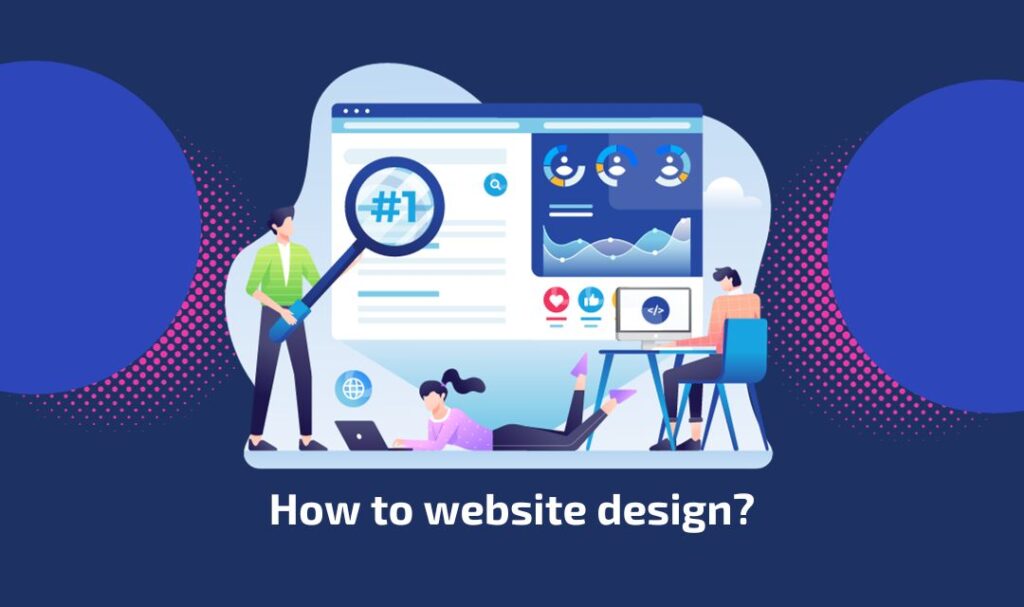How to Do Website Design
Website design is the process of planning, conceptualizing, and creating a website that is both visually appealing and functional. Whether you’re designing a website for personal use, business, or an e-commerce store, it’s important to follow best practices to ensure a user-friendly experience, responsive design, and SEO optimization.
In this guide, we’ll walk through the entire website design process step by step, covering everything from choosing a platform to launching your site.
Step 1: Define Your Website’s Purpose and Goals
Before you start designing, ask yourself:
✔ What is the purpose of the website? (e.g., business, blog, portfolio, e-commerce)
✔ Who is the target audience? (e.g., young professionals, students, businesses)
✔ What actions do you want users to take? (e.g., purchase, sign up, contact)
✔ What type of content will be included? (e.g., articles, videos, products)
This step helps you create a clear roadmap for your website.
Step 2: Choose the Right Website Platform
There are two main ways to design a website:
1. Website Builders (No Coding Required)
These platforms offer drag-and-drop tools for easy website creation.
✅ Best Website Builders:
- Wix – Best for beginners & small businesses.
- Squarespace – Best for creative professionals.
- Shopify – Best for e-commerce websites.
2. CMS (Content Management Systems – Requires Some Technical Skills)
A CMS (like WordPress) allows for more customization and control.
- WordPress – Most popular, highly customizable.
- Drupal – Best for complex websites.
- Joomla – Great for social websites.
3. Custom Coding (For Advanced Users & Developers)
For full control, you can design a website using HTML, CSS, and JavaScript.
✅ Best for:
- Large businesses need a fully customized solution.
- Developers with coding experience.
Step 3: Choose a Web Hosting & Domain Name
Your website needs a domain name (yourwebsite.com) and web hosting (a server to store your files).
1. Choosing a Domain Name
✔ Keep it short, memorable, and easy to spell.
✔ Use keywords relevant to your business (e.g., bestcoffeebeans.com).
✔ Avoid numbers and hyphens.
📌 Domain Registrars: Namecheap, GoDaddy, Google Domains
2. Choosing Web Hosting
Hosting affects speed, security, and reliability.
✅ Best Web Hosting Providers:
- Bluehost – Best for WordPress beginners.
- SiteGround – Best for fast performance.
- Hostinger – Affordable and beginner-friendly.
- Kinsta – Best for high-performance WordPress sites.
Step 4: Plan Your Website’s Layout & Structure
A well-structured website improves user experience (UX) and helps visitors navigate easily.
1. Create a Sitemap (Website Blueprint)
A sitemap outlines your website’s pages and how they connect.
✅ Basic Website Structure Example:
- Homepage – Introduction & overview.
- About Us – Company information & mission.
- Services/Products – What you offer.
- Blog – Articles and content.
- Contact Page – Form, email, address, phone.
2. Wireframing Your Website
A wireframe is a basic sketch of your website’s layout before designing it.
📌 Best Wireframing Tools:
- Figma
- Adobe XD
- Sketch
- Canva
Step 5: Design the Website Layout & UI/UX
Now it’s time to design the website using colors, fonts, images, and user-friendly elements.
1. Choose a Website Theme or Template
Most platforms offer pre-made themes to speed up the design process.
✅ Best Theme Marketplaces:
- WordPress: ThemeForest, Elegant Themes.
- Shopify: Shopify Theme Store.
- Wix & Squarespace: Built-in templates.
2. Choose a Color Scheme & Typography
✔ Use brand colors that match your identity.
✔ Stick to 2-3 fonts for readability.
✔ Use contrasting colors for buttons (e.g., blue & white, black & yellow).
📌 Best Font Styles for Websites:
- Sans-serif fonts like Roboto, Open Sans, and Montserrat (modern & clean).
- Serif fonts like Merriweather, Georgia (classic & elegant).
3. Design a Mobile-Friendly Website (Responsive Design)
✔ Ensure the website looks good on mobile, tablet, and desktop.
✔ Use flexible grids & images that adapt to different screen sizes.
✔ Avoid using large images or videos that slow down loading time.
📌 Best Mobile-Friendly Testing Tools:
- Google Mobile-Friendly Test
- Responsinator
Step 6: Add Essential Website Elements
Now, add important website elements that enhance functionality and engagement.
1. Navigation Menu
✔ Use a clear, easy-to-read menu at the top.
✔ Keep it simple – 5-7 main links are ideal.
2. Call-to-Action (CTA) Buttons
✔ Examples: “Buy Now,” “Sign Up,” “Contact Us”.
✔ Use contrasting colors to grab attention.
3. High-Quality Images & Graphics
✔ Use professional images (avoid blurry or low-resolution images).
✔ Use stock photo sites like Unsplash or Pexels if needed.
4. Contact Forms & Social Media Links
✔ Make it easy for users to reach you.
✔ Include WhatsApp, email, or live chat.
Step 7: Optimize for SEO & Speed
SEO helps your website rank higher on Google.
1. Basic SEO Checklist
✔ Use keywords in titles, headings, and descriptions.
✔ Write compelling meta descriptions (under 160 characters).
✔ Use alt text for images.
✔ Create high-quality content (blogs, articles).
📌 Best SEO Tools:
- Google Search Console
- Yoast SEO (for WordPress)
- SEMrush
2. Improve Website Speed
✔ Compress images using TinyPNG or ShortPixel.
✔ Use a fast-loading theme.
✔ Enable caching (WP Rocket for WordPress).
✔ Choose fast web hosting.
📌 Speed Test Tools:
- Google PageSpeed Insights
- GTmetrix
Step 8: Test Your Website
Before launching, test everything to ensure it works properly.
1. Check for Errors
✔ Test links & buttons (fix broken links).
✔ Check mobile responsiveness.
✔ Test contact forms & checkout pages.
2. Browser Compatibility Test
✔ Make sure the website works on Chrome, Firefox, Safari, Edge.
📌 Best Testing Tools:
- BrowserStack
- Google Lighthouse
Step 9: Launch Your Website 🚀
After testing, it’s time to go live!
✔ Connect your domain to hosting.
✔ Submit the website to Google Search Console for indexing.
✔ Announce your website on social media.
Step 10: Maintain & Update Regularly
A website requires ongoing updates to stay secure and functional.
✔ Update content & blog posts regularly.
✔ Monitor website speed & security.
✔ Fix bugs & broken links.
✔ Analyze traffic with Google Analytics.
Final Thoughts
Designing a website doesn’t have to be difficult. Whether you use Wix, WordPress, Shopify, or custom code, following these steps will help you create a beautiful, professional, and high-performing website.
💡 Need help with website design? Let me know! 😊




Pingback: How to make a responsive web design? | Expert Royal
Pingback: What skills should learn for a professional web designer? | Expert Royal